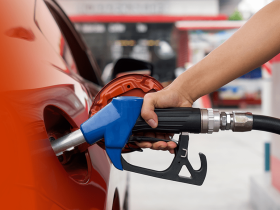I answer a lot of questions on Quora. Many of those questions are about automotive things that may be of interest to CarNewsCafe readers. Like this one.
What are the best fuel saving tips for driving a manual car?
My answer: The general caveats for getting the best fuel economy out of any vehicle (combustion or no) apply to those with manual transmissions as well. This includes light-weighting the car (not carrying a lot of junk), having optimal tire pressures, keeping the bodywork clean and smooth to minimize airflow obstructions, and knowing when your A/C is better for fuel economy than is a window rolled down (e.g. anytime you’re traveling faster than about 40–45 mph).
The primary thing to remember is that “slow is smooth and smooth is fast.” That racing mantra applies to MPG maximization as well. Take it slow, do everything smoothly, and the fast part comes on its own.
Drive at or below the speed limit on your given road, and take your time getting from a stop to that top speed and then wind down for the next stop starting early and slowing down gently. Think of driving as a bell curve rather than a plateau, where the fastest speed you can go (speed limit) is the apex of the curve, not the top of the plateau. Most people drive like the speed limit is the goal. Instead, it should be the least portion of your in-city driving time. The points before and after the apex (speed limit) when you’re slowing down or gaining speed are the norm. Learning to time lights and intersections so that you do not need to come to a complete stop is key. Gently slow until the light changes to your favor so you can catch your momentum and build upwards again without stopping.
Be aware that those around you are not likely to be happy with your hypermiling efforts and that the hardest thing will be learning to ignore them. Keeping your vehicle at its optimum fuel economy at all times will, unbeknownst to them, require that they either react badly (ruin their own MPG) or follow along and benefit as well.
The key with a manual transmission is to be shifting gears slowly, deliberately, and when it’s most conducive to economy rather than speed or power output. Shift up gears as soon as the RPM levels get high enough to enter the next gear without losing momentum and shift down gears (to slow down) as soon as there will be no “lurch” from the transmission is pushing into higher RPM with the downshift. In most gasoline cars with a manual transmission, the best shift point (going up) is around 1,800–2,000 RPM and the best downshift point is around 800–1,000 RPM.
Be smooth with that shift, taking the time to engage the clutch (disengage the transmission gears), move the lever, and reengage smoothly. Fast and Furious shifting is bad on transmissions no matter what the goal, but especially bad if the goal is to get good fuel economy.
Again, just remember that slow is smooth and smooth is fast.








Leave a Reply